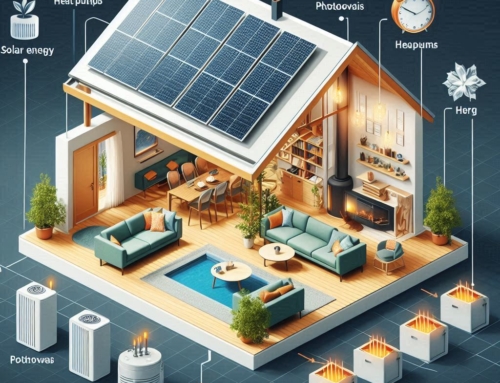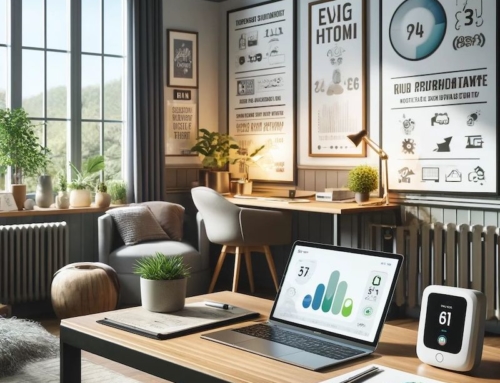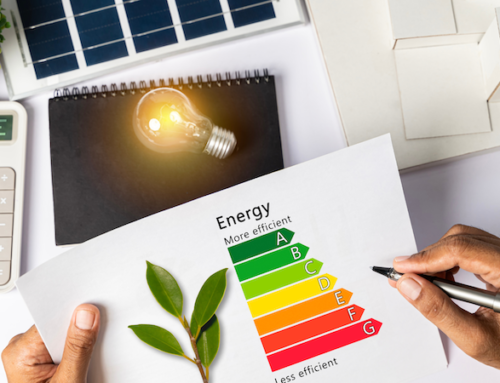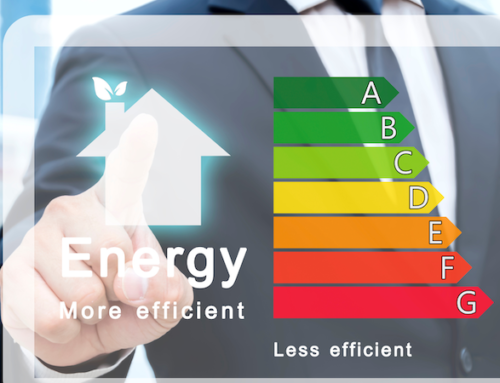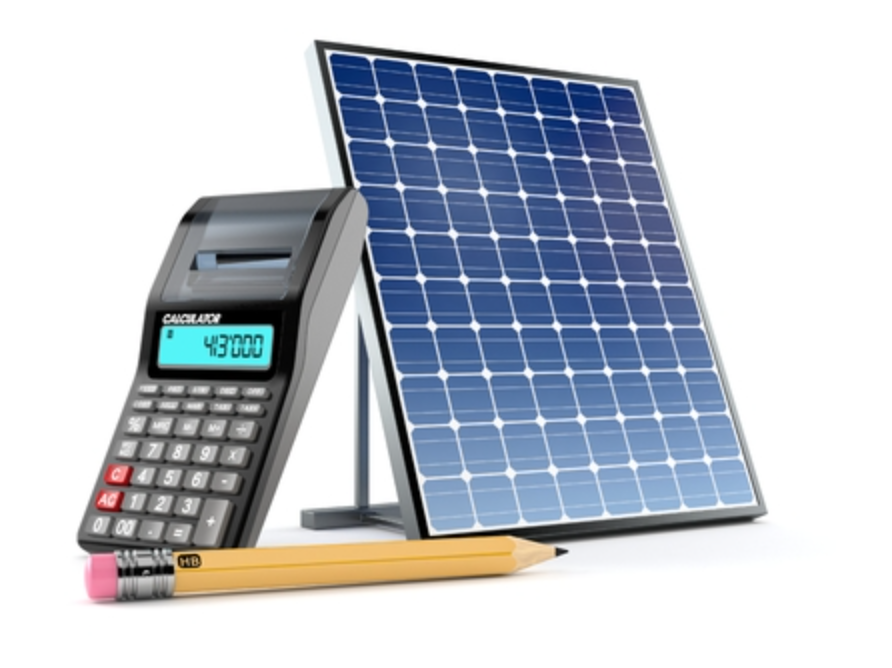
This article provides an analysis of the different key concepts to understand the challenges of a photovoltaic installation in Switzerland. The number of photovoltaic panels to install on your roof varies according to your consumption and self-consumption. In the following article, we will explain the latter, which consists of producing your own energy to consume it on site. Load shifting is an under-exploited but promising method. In addition, the physical characteristics of a solar installation will be put under the microscope in order to understand the phenomena and their limits. The life cycle of a panel will also be briefly discussed. The conclusion focuses on energy saving.
1. Introduction and physical units: kW and kWh
As a starting point and especially to avoid confusion, the physical unit W or kW is the power, and the unit Wp or kWp is the peak power of the solar panels. The latter refers to standard test conditions (STC conditions) and is used as a reference by panel manufacturers.
The energy, or work, is obtained using the product of the power in kW and the time in hours, e.g. 1 kWh means that a load consumes a power of 1kW during one hour. The conversion between J and kWh can be calculated using the equations below:
1 Ws (Watt-second) = 1 J (Joule)
1 kWh (kilowatt hour) = 3.6 x 106 J = 3.6 MJ (Megajoule)
Ok, but how much is a kWh?
Maybe this conversion will help you understand
One large Pizza margherita ~ 1 kWh ~ 860 kCal
2. Number of panels
A typical household in Switzerland consumes about 4'500 kWh/year, to produce this same amount of electricity about 4.5 kWp of solar panels can be installed (PVsyst - Meteonorm2022) This corresponds to about 14 panels of 340 Wp. The rule of thumb is: 1 kWp of installed photovoltaic panel gives an annual production of about 1'000 kWh/year in Switzerland.
The number of panels can be chosen according to the electricity consumption. However, this choice does not take into account the intermittency of the sunshine according to its consumption. Self-consumption, i.e. the share of electricity directly consumed on site, is also an important factor in answering the question rigorously. There are several ways to optimise it.
3. Subsidies photovoltaic panels
A first approach would be the price of the installation and its payback period. The Swiss Confederation, through PRONOVO, offers a one-off payment (which can cover up to 30% of the investment costs) in order to encourage house owners to use this new energy source.
Several municipalities and electricity suppliers, e.g. SIG, offer additional Subsidies .
4. Self-consumption and load shifting: what is it?
First of all, load shifting is the simplest and most affordable: all it takes is a little discipline, right? VESE has a very interesting and useful manual on this subject. The idea is that as soon as the sun shines on your photovoltaic system, you should try to switch on energy-consuming appliances. For example the dishwasher, the washing machine or maybe even an electric means of transport. In addition, a heat pump or an electric boiler can be used to convert the excess electrical energy from the photoelectric effect of the silicon cells into thermal energy. Batteries can also optimise self-consumption, typically if you have a car or electric bicycles and you charge them during the day.
5. Physical characteristics of the solar system
For a good overview of the issue in this article, understanding the physical characteristics of the installation is crucial. This is a key point for choosing the most suitable technologies:
- Cell type: monocrystalline, polycrystalline or amorphous?
- Roof mounting methods: integrated or added panels, façade or roof?
- The technology used for the conversion of direct current into alternating current: central inverter, with power optimizer or micro-inverters?
- Orientation and inclination of the panels: shedding, dome, dome V, racking?
- The amount of sunshine at the production site over the whole year
So how many photovoltaic panels are adequate?
In general, about ten 340 Wp monocrystalline panels will do for a private household without excessive electricity consumption (Labouret & Villoz, 2006). However, if a household has, for example, a heat pump or an electric car the number of panels can be adapted accordingly. Generally, this results in full exploitation of south and east-west facing roofs. (SFOE, n.d.). The use of a micro-wave generator is also recommended. This solution will avoid DC current in the house, less risk of lightning, more efficient production and up to 10% higher than the use of a central inverter.
Is it better to have an integrated installation or to add it to the roof? Generally, the first type of installation on a sloping roof is 15% more expensive. However, if the installation is done in addition to a roof renovation, the installation can be even cheaper. For example: the scaffolding is already in place and there is no need for an anchoring structure, among other things.
6. Life Cycle Assessment
Another factor that becomes essential when planning a solar installation is the life cycle analysis of the panels. In Switzerland, the solar industry is strongly influenced by the European and Chinese markets. The production of photovoltaic panels is therefore relocated from the Swiss end consumers.
Many factors influence the environmental impact of a solar panel. These include; the materials used, the methods of extraction of these materials, the manufacturing process, transportation, the amount of water used and the origin of the energy required for each stage from cradle to grave (end of life of the product). (Jolliet, 2010)
Solar panels in Switzerland Romandie
A solar panel produced in Switzerland will have a lower environmental impact than one produced in China. This is because the generators that supply the Swiss electricity grid are mainly of hydro and nuclear origin. (Haselhuhn et al., 2014) These are technologies that emit very little greenhouse gases. Once the solar panel is at the end of its life, generally after 25 years, it must be recycled. (Haselhuhn et al., 2014) The majority of panels can be recycled without any problems in Switzerland. The materials can be recovered for new panels or other products. These materials no longer have to be extracted from the environment, which saves energy and costs and reduces the environmental impact. Photovoltaic specialists are setting up a European recycling network. For solar cells, which contain cadmium or other heavy metals, they have to be treated differently. (Labouret & Villoz, 2006)
7. Energy saving and conclusion
The last point that will serve as a conclusion and a benefit of questions is energy saving. Energy conservation is one of the pillars of the Swiss government's energy transition (SFOE, 2021): "The most beneficial energy for the environment is that which is not produced". Before thinking of installing a certain amount of panels according to the household's consumption, it is wise to analyse the possible energy savings. For example, choosing electrical appliances according to the energy label. This is usually the same logic that applies to new heating. Typically, insulating the building well before replacing the boiler with a heat pump will save a lot of electrical energy over the next decades.
Our services in all this
You've read our article, done some more research, had a good night's sleep and decided it's time to get started... and you decide to use our services!
If you need to have a CECB/CECB+ to meet a grant condition, you can call on our certified expert who will issue the certificate.
If you want to avoid complexity and bureaucracy, you can opt for our grant application handling service.
And finally, if you would like to be accompanied from the end of this article, from the period of reflection to the completion of the work, then contact us to benefit from our expertise, our experience, and, let's say it, our passion.

